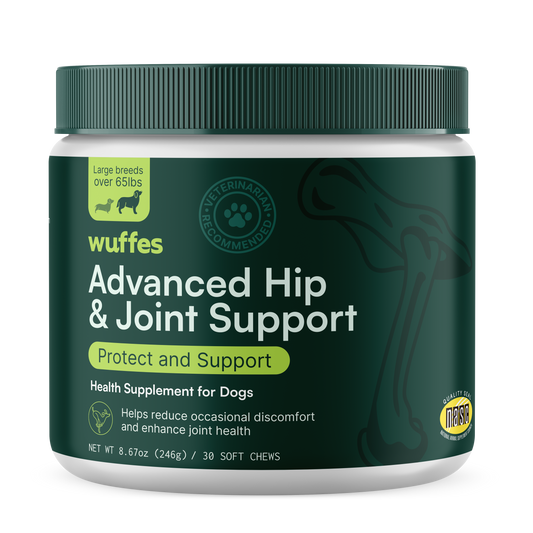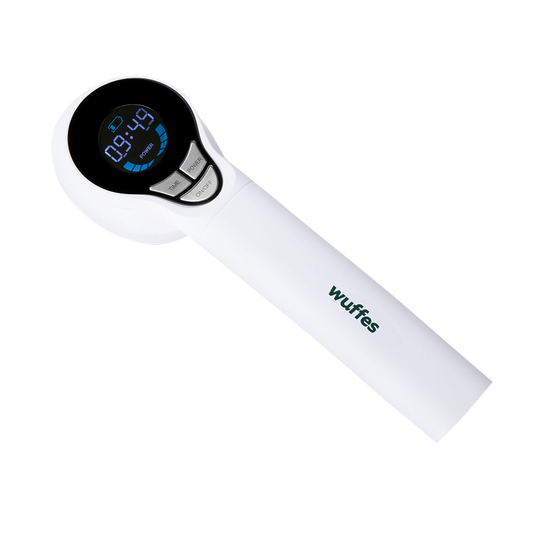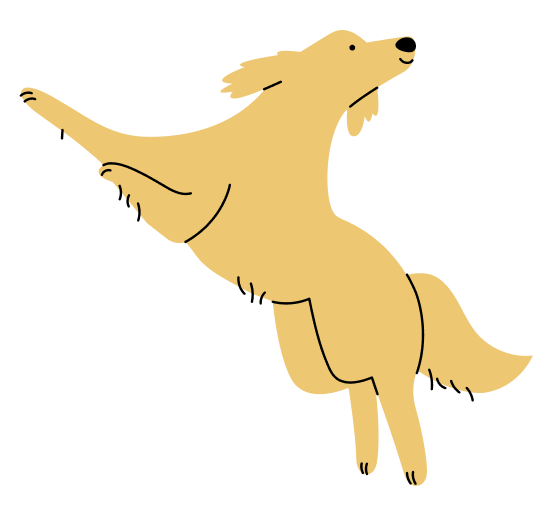As dogs age and develop issues with mobility, it is important for pet parents and veterinarians to consider how the home environment impacts their ability to perform basic activities of daily living. For dogs, examples of basic activities include rising from lying down to sitting and standing, maintaining a standing position to eat and drink, walking in and out of the home, and posturing to urinate and defecate. [1]
Similar to elderly people, simple adjustments can make a huge difference in your dog’s ability to perform basic activities independently, enhancing both the dog and pet parent’s quality of life. For elderly people, maintenance of independent function is associated with lower rates of injury and hospitalization, which we also want to prevent in our older pets. [1]
The home environment
Flooring
Dogs with reduced mobility will benefit from flooring with good traction, especially in areas where they are commonly rising from lying down/sitting, standing for long periods, and/or walking to get in and out of the home. If your home has slick flooring, like tile or hardwood, adding rugs or yoga mats to these areas is recommended. Alternatively, there are several bootie and nail/toe grip options you can consider to aid in your dog’s traction. Keeping paw fur and nails trimmed is also important for traction.
Steps & Stairs
Some older dogs are unable to use steps and stairs independently. Adding a rug or stair treads may be of benefit. Alternatively, placing a dog ramp over a few steps can be a useful option. There are also several harness and sling options available to assist your dog in navigating stairs and steps. If possible, you can reduce the number of times your older dog has to navigate these areas each day. For example, moving their bedding or food dishes to keep their daily activities restricted to one level of the home. You may also consider placing a gate at stair entries to prevent your pet from attempting to navigate these without your assistance.
Eating & Drinking
For some older dogs, it becomes challenging to lower the head and neck, altering weight-bearing and balance, to reach food bowls on the ground. There are many elevated food bowl stands you can consider to make meal time easier. Improving traction in the area where they stand to eat and drink is also recommended.
Navigating Furniture
Similar to stairs, for some older dogs restricting access to furniture using gates may be recommended to prevent injury. Alternatively, adding area rugs and/or steps or ramps can make the furniture safely accessible. You can also try to train your dog to ask for your help to get on/off furniture, or consider adding a dog bed near to these areas, avoiding the furniture altogether.
Bedding
Older dogs may benefit from a change in bedding, from a softer to a firmer cushioning, making it easier to get on and off the bed. There are many dog beds with orthopedic cushioning to provide this extra support and reduce pressure placed on your dog’s joints. Some of these beds also include raised or bolstered edges, providing additional postural support for your pet.
The outdoor environment
Toilet Area
Accessibility to the area where your pet urinates and defecates should be considered. Using some of the tools mentioned above to help with stair navigation, and considering an elimination area closer to the entrance to your home, can make this simpler for your older pet. Maintaining standing postures will be easier on a flat, firm surface, such as grass or turf, rather than irregular or soft surfaces, like rocks or sand.
Cognitive Support
Older dogs are at risk for cognitive decline, similar to human dementia or Alzheimer’s disease. As dogs increase in age from 11 years old to 15 years old, their likelihood of having some cognitive dysfunction increases from 28% to 68%. [2] Dietary changes, supplements and cognitive enrichment can all help support dogs with cognitive decline. [2]
An important part of cognitive enrichment for dogs is exercise and exploring new areas, especially using their sense of smell. [2] To allow older dogs with mobility issues to explore new outdoor areas, you can consider using your car or a wagon/ dog stroller to bring them to a new outdoor area. This enables a short walk that they can complete without becoming weak, tired, or sore. Allowing them to walk at their own pace to sniff will provide extra cognitive enrichment.
Additional considerations
Consulting your veterinarian, or a veterinarian specializing in rehabilitation, is an excellent way to receive individualized recommendations for your older pet. Veterinarians can provide specific recommendations for assistive devices, such as harnesses, slings, booties, and toe-grips/ treads. They can also create a targeted exercise plan for your dog, similar to physical therapy for older people, to improve their ability to perform basic activities independently. [1] Dietary changes, supplements and/or pain medications can further support your pet’s mobility, cognition, and independent function.[2]
References
- Frye C, Carr BJ, Lenfest M, Miller A. Canine Geriatric Rehabilitation: Considerations and Strategies for Assessment, Functional Scoring, and Follow Up. Front Vet Sci. 2022;9:842458. Published 2022 Feb 25. doi:10.3389/fvets.2022.842458
- Dewey CW, Davies ES, Xie H, Wakshlag JJ. Canine Cognitive Dysfunction: Pathophysiology, Diagnosis, and Treatment. Vet Clin North Am Small Anim Pract. 2019;49(3):477-499. doi:10.1016/j.cvsm.2019.01.013
Dr. Erin Miscioscia, DVM DACVSMR CVA












